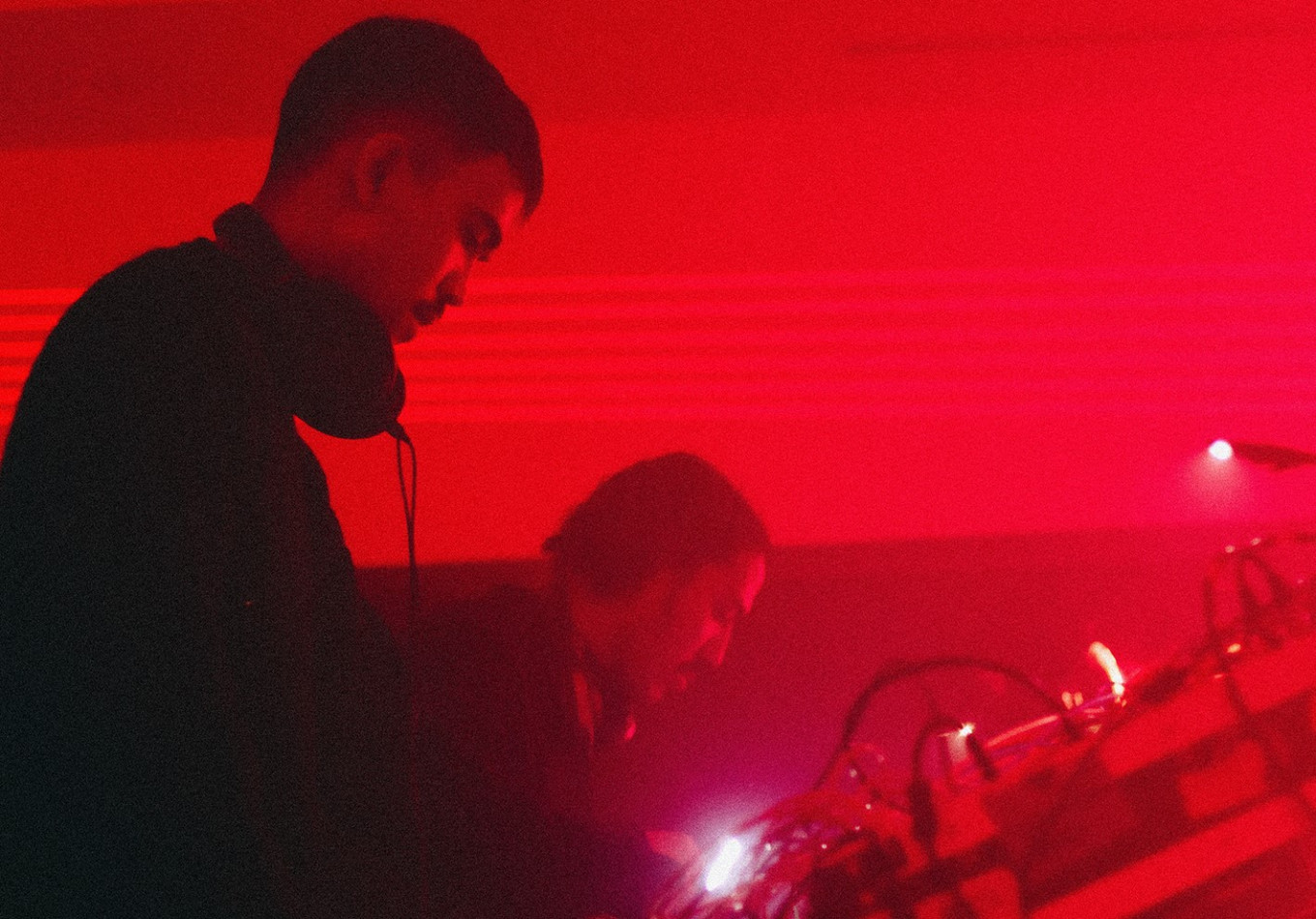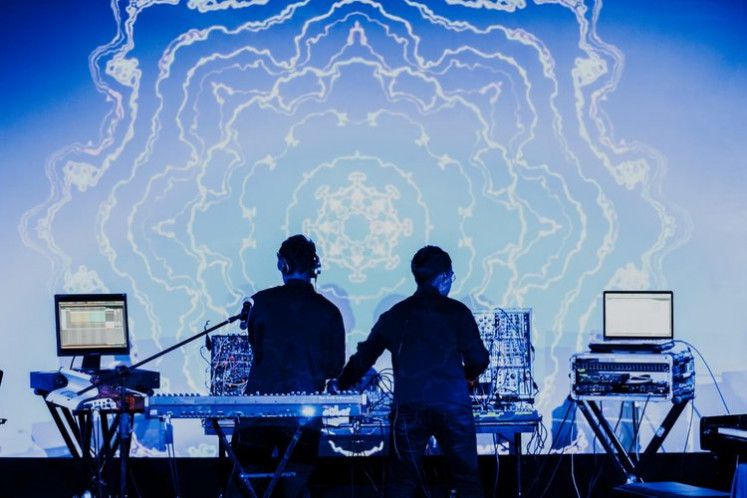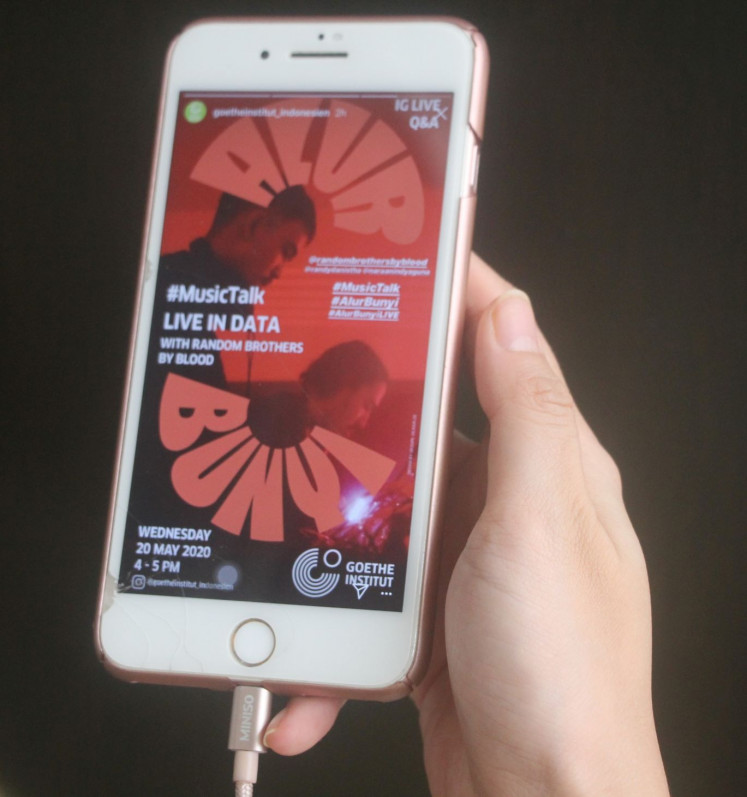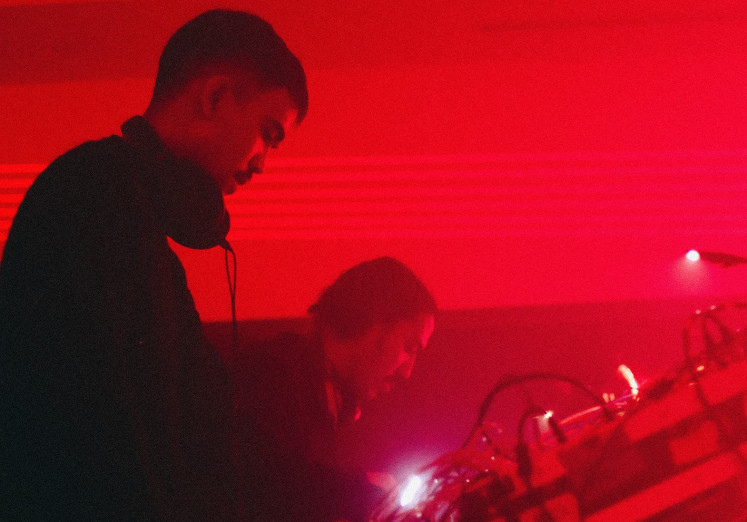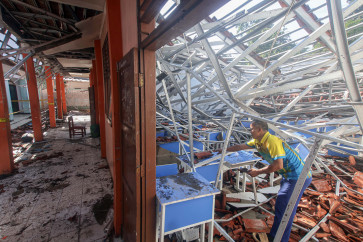Popular Reads
Top Results
Can't find what you're looking for?
View all search resultsPopular Reads
Top Results
Can't find what you're looking for?
View all search resultsRandom Brothers by Blood creates rhythms through algorithms
The word “data” might make you think of numbers, the polar opposite of making music, perhaps because of how different the two realms are.
Change text size
Gift Premium Articles
to Anyone
When you hear the music that comes out of data, you could be pleasantly surprised.
Turning data into tunes is what electronic duo Random Brothers by Blood does, as shown during an Instagram Live session hosted by Goethe-Institut.
Composed of Randy Danistha of Nidji band and his younger brother Nara Anindyaguna, the duo experimented with audio and visual data on hand at their studio, creating a sort of live performance themed around looping.
Tuning in: Supersonik #27 is a music showcase by Random Brothers by Blood held at Institut Francais Indonesia in Jakarta in collaboration with Dalilektra, accompanied by a sound installation experience by Coune and a visual installation curated by Lalune. (Courtesy of Random Brothers by Blood/stevesmith-production.com)Using a sampler, Nara explained they had made a “speech performance” by looping their own voices into a network system using data.
“Some can say that it is art, and others would say that it is acousmatic [heard without being seen],” Nara said. “The concept of this performance is that you are watching data — we are inside a computer, in the form of network and pixels.”
Randy said the duo made music using random data and concepts — hence the name — but harmonizes them into a singular composition.
The brothers work and play remotely, each performing and creating at their own studios. Making things even more meta, they worked on data from a previous performance at Goethe-Institut’s Alur Bunyi (Sound Flow) concert series in 2018, essentially creating a performance of a performance.
The previous performance involves elements that many would consider to be random: strings, vocals and a beat that seems to be tinkling, before being closed with a recorded applause track. Still, the track carves its own niche, certainly not something you’d normally find on the radio.
One of the experiments during the session was a sequence overlaid with a piano played live, courtesy of Nara.
Randy pointed out that musical instruments like synthesizers contain data and algorithms, so every time they are played, it’s literally processing data into compositions.
“So unknowingly, throughout the years, we’ve been playing electronic music because there is data inside of it.”
Nara said he was amazed by people whose jobs involved working with data and transforming them into something that was essential and needed.
As for the duo’s latest performances, he explained that for the most part, the two used samples in lieu of playback, utilizing data appropriate to the theme.
“So, the concept is that we’ll play with those samples in a live setting. What that means is that we don’t use a fixed sequencer. As can be gathered by the title, it will be much more random and we can explore more on stage,” he said, adding that practice sessions involved memorizing patterns and moods along with the repertoire.
Electronic duo: Random Brothers by Blood experiments with audio and visual data, turning them into tunes. (Courtesy of Random Brothers by Blood/-)Since its inception in early 2018, Random Brothers by Blood has utilized modular synthesizers to create music that can be as varied — or random — as they come.
For example, “Growth” is an upbeat track that seems to suggest an optimistic approach, whereas “Random Eyes” is much more visceral yet robotic due to the feminine vocals that loop around throughout.
Randy said that when creating, the duo would sometimes find particular sounds that they take a liking to, sometimes things that they could not replicate. That sound would then be recorded and inserted into a sequencer to become a signature part of that performance.
Nara is of the opinion that making music is like data; each aspect is worked on individually, researched and reevaluated, and then developed. However, Randy said the data needs to be carefully considered and appropriate for the composition.
“For example, if you have four instruments, you have four distinct data on the recording. When the sound is played back, what makes it different is the composition and skill involved. We try to add more data through previous productions and samples, and the end result can even be increasingly different,” Randy said, adding that simple compositions would be enriched by these distinct elements.
It helps that the brothers are born-and-bred musicians. Playing the piano from a young age and under the guidance of a musician father, the two entered the industry in different ways.
Randy entered the pop music scene as the keyboardist of Nidji and had his own electronic music project Kronutz, while Nara embarked on the path with Mjolnir, a “dark-disco-tech” duo with his friend Catra Adhiwardana.
Aside from their respective projects, the brothers also run STEVESMITH Music Production, whose portfolio ranges from advertisement jingles to movie scores.
While the brothers’ current project can be described as largely electronic, Nara said the genre could vary according to each collection they release: on-the-floor techno dance, mood-appropriate or pop.
“But everything is still wrapped in our theme, which is random. We are freer than the usual patterns.” (ste)

